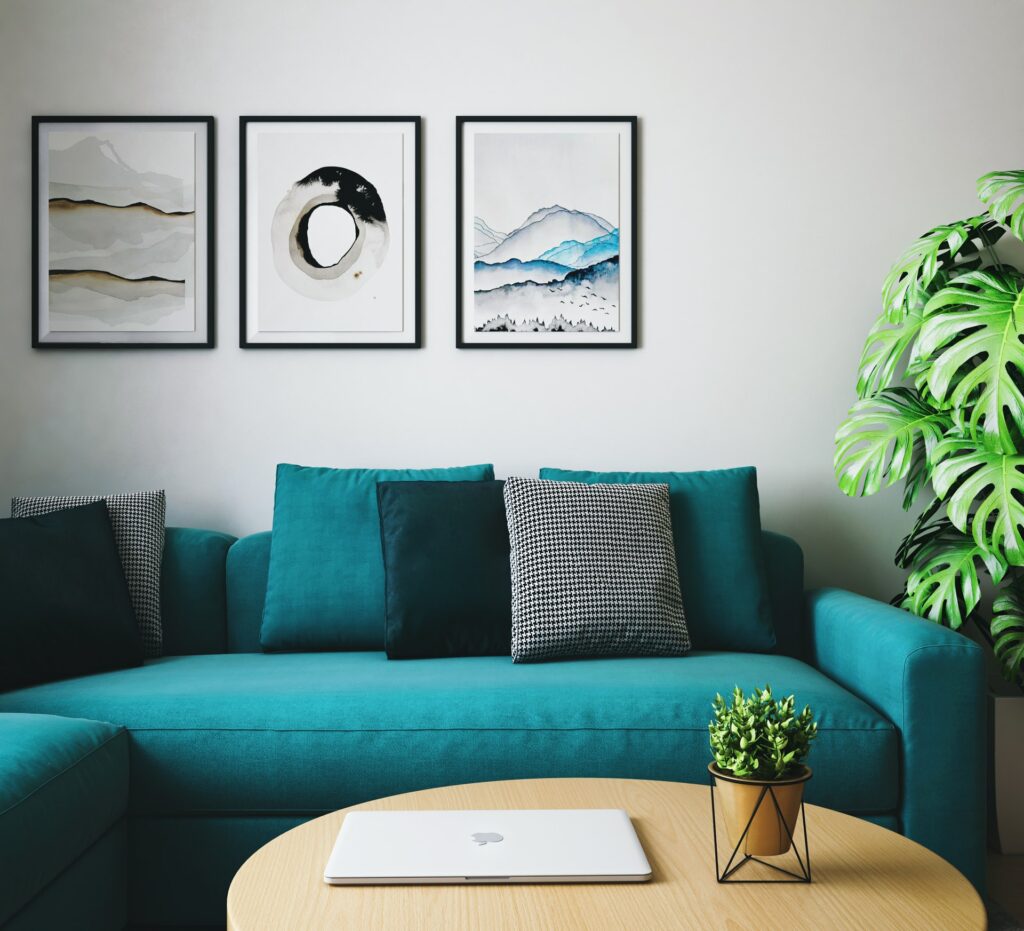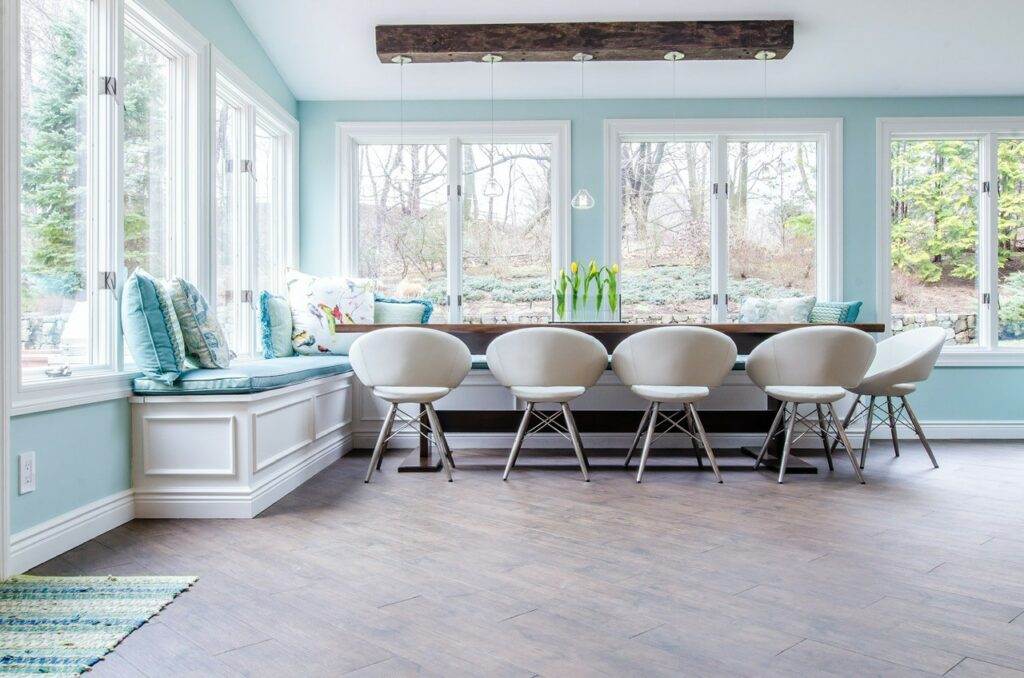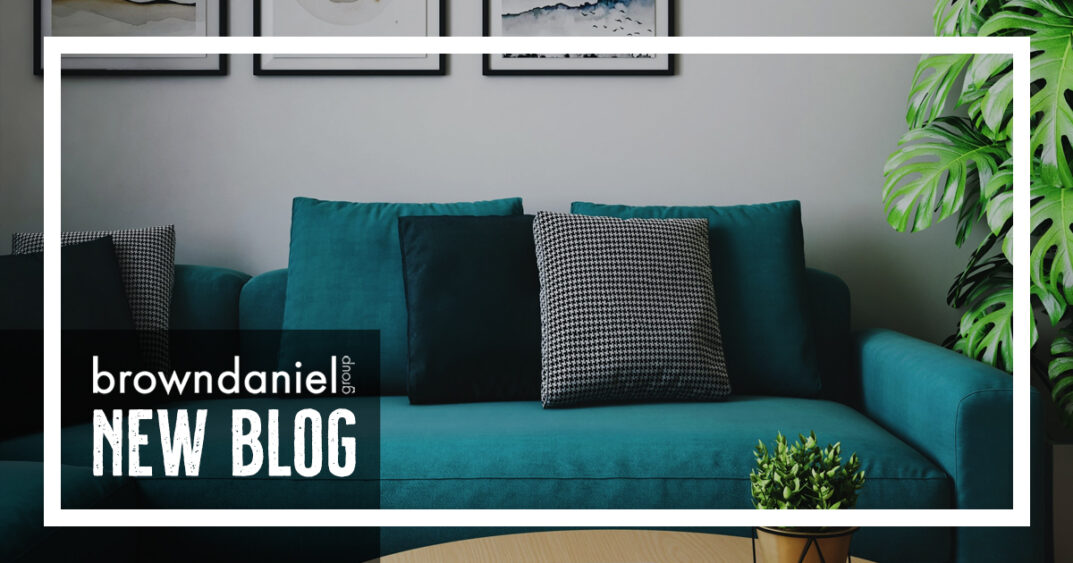
Everywhere you turn you are likely to hear something else about decluttering. Its the first thing you do when you decide to put your house on the market, and it is also something organization experts recommend you do regularly to keep your house looking its best. However, it’s completely possible for your cabinets and closets to be fully decluttered and perfectly organized, and yet, your home still feels like it isn’t quite pulled together. You may even get the feeling that things are a bit disheveled, no matter how much work you put in. As it turns out, the culprit could be your overall design and decor. Making just a few changes you might never have thought about before could be the trick to transforming your home into a much more inviting and visually appealing.
Don’t Over Furnish a Room

Not every piece of furniture is made to fit just any room. Some larger pieces can easily overwhelm a small room, or may not work in a bigger room depending on the shape of the area. It is important to remember that no matter how much you like a piece of furniture, that doesn’t mean it will work well in your space. Furniture that is too large for a room overwhelms it and will make your space look disorganized and jumbled together. The biggest thing to keep in mind is scale and placement. Furniture should float rather than being pushed tightly against walls.
The same philosophy carries through to the other items in a room. We love our books but a bookshelf will look cluttered if it is overfilled with more books than will easily fit on each shelf. If a formal sitting room with shelving looks cluttered, move some of your favorites to another location, such as the master bedroom or a guest room. Leave a few areas inside of the shelving empty – this break in the stacks is a visual trick that will make the room appear to have more available space.
Anything that is sitting out or attached to your walls should also be added sparingly. One art piece per wall is a good rule of thumb, and no more than three pictures or other pieces per flat surface is another good guideline to keep in mind. Walls that are overfilled so that there is no blank space available doesn’t just make a room look cluttered, but can also make it appear smaller as well.
Purchase the Right Rug
The right area rug can make a room feel more polished and pulled together, and may even help a smaller room look and feel bigger than it is. It is important that when you are shopping for a rug, that you pay more attention to size and quality rather than price. Smaller rugs are often significantly cheaper than larger ones of the same quality, but go ahead and splurge for the largest size appropriate for your space. Here are some important rules to keep in mind:
- Your rug should be at least six inches wider than your sofa on both sides.
- Area rugs generally should run the entire length of your sofa.
- There should be 30 to 36 inches of walking space in between large furniture pieces in a room.
- Either all legs of your furniture should be on the rug, or the front legs only.
Don’t Overdo the Accent Pillows

Over and over you will hear from home decor experts that accent pillows are a wonderful way to add a pop of color to a room. They can brighten up a room that otherwise looks too neutral, and they allow you try out a new and vibrant color before committing to a piece of furniture or a paint shade. However that has led to many of us overdoing it with accent pillows, adding too many to our chairs and sofas. This can cause your living room or sitting room to look too busy and unkempt.
How many pillows is too many, you are probably asking. If you have to move pillows out of the way in order for you or your guests to have a seat, you need to purge your pillow collection. Also keep in mind that it is easier to overwhelm smaller furniture pieces than larger ones, so one pillow per chair is a good rule to follow. Deeper couches can handle a few more pillows than more shallow ones. The size of the pillows matters too. Standard throw pillows are square and roughly 20 inches in area. If you are using larger accent pillows, you will need fewer per furniture piece. Experts say that if you are using pillows that are standard in size, three for a small couch and five for a larger one is sufficient.
Underusing Natural Light

Some rooms in your home may not be blessed with expansive windows to allow in large amounts of natural light, so making do with artificial lights from lamps and overhead fixtures will be your only option. But what about those common areas with plenty of windows? Are you unintentionally blocking the natural light that could be flowing into those spaces? If so, you’ll find that you are much happier with the vibe of the room if you find a way to maximize that natural light. Low lighting from artificial sources can make even a larger room feel cramped, and can well decorated rooms may look dull an uninviting. The light from overhead fixtures and lamps affects everything about the look of a room. It can make the paint on your walls appear to be a different color, and make furniture appear older and even dirty. This is the primary reason why everything you purchase for your home, from paint to furniture and textiles, tends to look different once you get it home than it did in the store or showroom. To combat this affect, switch off the artificial light and raise your blinds to allow natural light in.
Don’t Mix Too Many Colors in One Space
Having a room filled with too many neutral colors, or too much white is not a good decorative move, but it is also possible to have too much of a good thing when you are adding in color. When considering what color to paint your walls, or the colors of new furniture pieces, you should strive to pick a mix of shades and patterns that work well together. If you throw too many colors or prints together, they will compete for visual attention and make the room look cluttered and unkempt.
If you have already purchased an area rug for a particular space, look to the colors in the rug to dictate the palette you can work with for the rest of the furnishings. Having five or six colors in a rug gives you a lot to work with and a great deal of flexibility. On the other hand, if you have a solid color area rug, then you have some leeway to bring in furnishings is a bright pattern with a mix of a few colors. One piece in a vibrant pattern is really all a room needs to provide visual stimulation. If you add more patterns, this will confuse the eye and leads to an overall unpleasant look.
Addressing the Clutter of Technology
Some of our rooms almost seem to be devoted to media and technology, such as TVs, video game systems and desktop computers. Just because we have given certain rooms over to these devices, doesn’t meant we must live with the clutter they create. If you want to disguise your television, you can choose to set it up inside a TV armoire rather than mounting it to the wall. If you are like many of us and prefer to mount it instead, there are still a lot of creative ways that you can disguise cords, cables and plugs. Cabinets can house many of the external components along with video games and DVDs. Cord covers that hug the wall, floor and snake around doorways are now made to either be painted to match your walls, or to blend in with crown molding, baseboards or other trim. Most of the big box housewares and hardware stores stores and websites offer a seemingly endless array of products to help manage cords and cables. Once you have your cords and cables put away, any room will look more organized and pulled together. However, this isn’t simply a matter of aesthetics. Neglected cords can be a fire or tripping hazard. The can also make cleaning more difficult, as cluttered surfaces are much more difficult to dush and keep clean.

